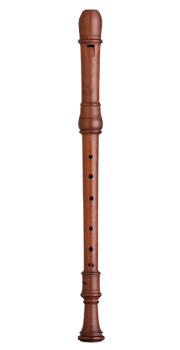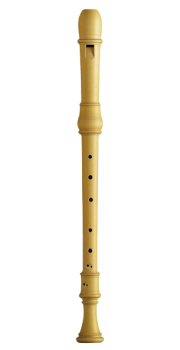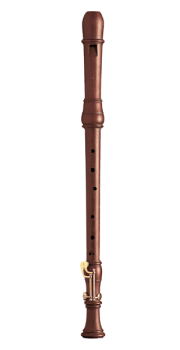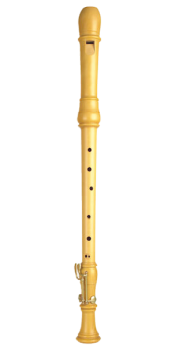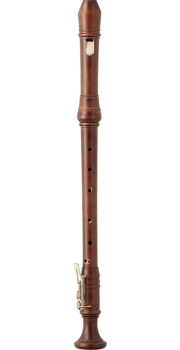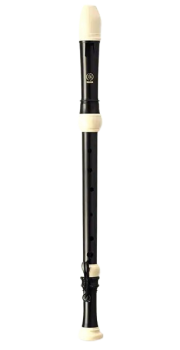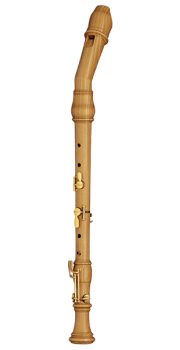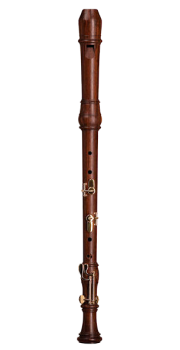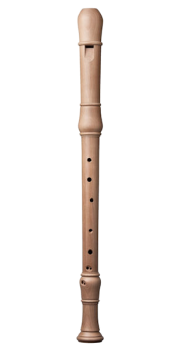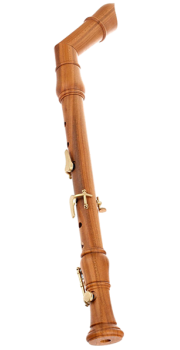No products
Prices are tax included
Filters
Please read all of this before buying a tenor!!!
Many players find it difficult to reach all the holes when playing tenor, especially for the smallest 2 fingers of the right hand. The tenor is by no means the largest recorder, but still it can involve finger stretches greater than on any of the larger bass instruments. Our experience over 25 y...
Please read all of this before buying a tenor!!!
Many players find it difficult to reach all the holes when playing tenor, especially for the smallest 2 fingers of the right hand. The tenor is by no means the largest recorder, but still it can involve finger stretches greater than on any of the larger bass instruments. Our experience over 25 years has shown that when a player encounters finger spacing problems, ninety nine times out of a hundred it will be on a tenor. These problems often result in either having to stop playing the tenor altogether, or having to upgrade to a knick or a comfort model - please choose carefully!!!
There is quite a bit of variation in finger hole position from one maker to another, and from one model to another. The chart below was prepared to try and show which ones will be easier. There are several factors involved: the distance between the holes is important, but another significant factor is whether the recorder is straight or has a bent head ("knick"). Knick tenors allow the right hand to hold the recorder in a higher position than with a straight instrument - the right hand is not stretching down so far and consequently a spacing that may actually be a little wider will still feel easier to reach on a knick instrument. Players that have problems with their right-hand wrist should strongly consider knick instruments.
The chart shows clearly that the use of split keys for C and C# doesn't automatically mean the right-hand little finger doesn't have to stretch so far. Many players assume that if they choose a model with C/C# keys they will have no problems, when in fact many of the most extreme little-finger stretches are actually on keyed instruments.
Often a player will have specific issues with one or two fingers. If this is the case, then you may need to focus more on comparing the measurements for the holes played by the problem fingers. In such cases the general ranking provided here might not be so relevant for your special circumstances.
In this chart the weights shown are a guide only - weight can vary within a particular model depending on which wood has been used.

A large range of tenor recorders made in a beautiful range of woods including pear, plum, satinwood, olive, rose, palisander, grenadilla, boxwood and cherrywood. Orpheus Music stocks tenor recorders from a variety of makers including Mollenhauer Recorders from Germany, Kung Recorders from Switzerland and Aulos, Yamaha and Zen-on Recorders from Japan. The tenor is a great ensemble instrument as well as a favoured recorder for contemporary compositions.
Reference: MOL-5416
Brand: Mollenhauer
Denner Tenor Recorder (with double key) in Pearwood
- Pearwood Tenor, Baroque double holes, with double key.
- Denner - A wealth of sound from fine woods. A sophisticated ensemble based on original instruments by Jacob Denner (1681-1735) in Nuremberg and Copenhagen. Brilliant, expressive sound with a convincing charm.
- Agile, quick response in all octaves: ideal for virtuosic music of any era.
$1,257.00 $1,332.00Reduced price!In StockReference: MOL-5420
Brand: Mollenhauer
Denner Tenor Recorder in Rosewood
- Rosewood Tenor, baroque double holes.
- Denner - A wealth of sound from fine woods. A sophisticated ensemble based on original instruments by Jacob Denner (1681-1735) in Nuremberg and Copenhagen.
- Brilliant, expressive sound with a convincing charm. Agile, quick response in all octaves: ideal for virtuosic music of any era.
$1,415.00In StockReference: MOL-5422
Brand: Mollenhauer
Denner Tenor Recorder in Castello Boxwood
- Castello Boxwood Tenor, Baroque double holes.
- Denner - A wealth of sound from fine woods. A sophisticated ensemble based on original instruments by Jacob Denner (1681-1735) in Nuremberg and Copenhagen.
- Brilliant, expressive sound with a convincing charm. Agile, quick response in all octaves: ideal for virtuosic music of any era.
$1,115.00In StockReference: MOL-5430
Brand: Mollenhauer
Denner Tenor Recorder (with double-key) in Rosewood
- Rosewood Tenor, baroque double holes, with double key.
- Denner - A wealth of sound from fine woods. A sophisticated ensemble based on original instruments by Jacob Denner (1681-1735) in Nuremberg and Copenhagen.
- Brilliant, expressive sound with a convincing charm. Agile, quick response in all octaves: ideal for virtuosic music of any era.
$1,831.00In StockReference: MOL-5432
Brand: Mollenhauer
Denner Tenor Recorder (with double key) in Castello Boxwood
- Castello boxwood tenor, baroque double holes, with double key.
- Denner - A wealth of sound from fine woods. A sophisticated ensemble based on original instruments by Jacob Denner (1681-1735) in Nuremberg and Copenhagen.
- Brilliant, expressive sound with a convincing charm. Agile, quick response in all octaves: ideal for virtuosic music of any era.
$1,475.00In StockReference: ZT-7M
Tenor in Maple by Zenon
The Pastoral hand-made recorders are specially developed for professional and advanced players.
$1,131.00Out of stockReference: YRT304B
Brand: Yamaha
Tenor Recorder
This new model tenor incorporates
Yamaha's wooden design expertise with
the convenience and durability of an ABS
material. It offers a focused, mellow
sound which is balanced in all registers.
$220.00In StockReference: MOL-5431KC
Brand: Mollenhauer
Denner Comfort Knick Tenor Recorder in Cherrywood
Mollenhauer bring the beauty and elegance of their Denner range to the needs of Tenor players with this bent-neck Comfort Tenor. European cherrywood is the lightest Recorder Wood and gives an amazing depth of resonance.
$2,383.00Out of stockReference: MOL-5430C
Brand: Mollenhauer
Denner Comfort Tenor Recorder in Rosewood
- Rosewood tenor, baroque double holes, with four keys.
- Denner - A wealth of sound from fine woods.
$2,446.00In StockReference: K1501
Brand: Kung
Studio Tenor Recorder in Pearwood
- Made from selected Pearwood.
- Baroque double holes.
- Suitable for beginners as well as for ensemble playing.
- The Kung Studio model recorders have a warm and pleasant sound.
$696.24In StockReference: K1593
Brand: Kung
Sinor Knick Comfort Tenor in Cherrywood
Made from selected Cherrywood
Baroque fingering, double keys C/C#, extra keys G and F
Bent ("knick") headjoint for extra access and comfort
Kung's signature rich and warm sound, perfect for ensemble work
$1,660.00Out of stockReference: MOL-5416C
Brand: Mollenhauer
Denner Comfort Tenor Recorder in Pearwood
- Pearwood Tenor, baroque double holes with four keys.
- Denner - A wealth of sound from fine woods. A sophisticated ensemble based on original instruments by Jacob Denner (1681-1735) in Nuremberg and Copenhagen.
- Our Comfort Tenor makes playing easy: two additional keys reduce the stretch of the hand.
$1,875.00Out of stock


